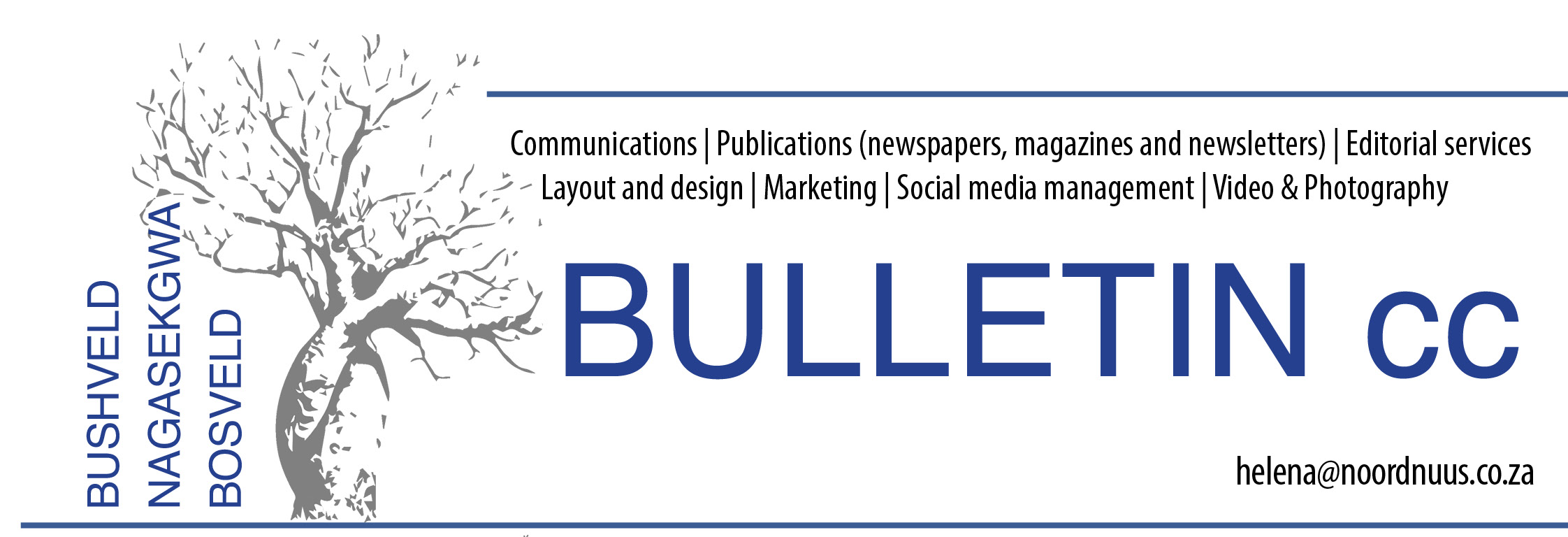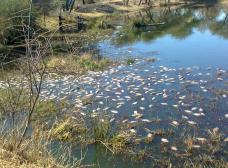River of death
By Marie Hurter
LEPHALALE - Laboratory reports from two independent water tests, taken at different spots along the Zandsloot streambed over a period of two weeks, confirms contamination of the water through effluent running from the Zongesien sewage plant in Marapong.
This follows on-going fish deaths reported by landowners who live along this perennial stream just outside Lephalale. The Zandsloot runs through various farms for about 7km into the Mogol River, an agricultural lifeline in the area.
Water samples taken by Northern News on 5 September and tested by NHLS (National Health Laboratory Services) in Johannesburg reports an “innumerable” Agar Plate Count in both samples. This count should be less than 100 cfu/ml. The Total Coliform Count is more than 2419 per 100ml in both samples and the E.coli Type 1 count which should be zero cfu/100ml, is 96 per 100ml in one sample and 2419 per 100ml in the other.
The second set of water samples were taken a week later and tested by Clean Stream Scientific Services in Pretoria. Their report indicates that the Total ammonium, the orthophosphate, total coliforms, COD and E.coli, all exceed the Department of Water Affairs’ (DWA) target water quality guideline. This report concludes that the water quality is poor.
The DWA collected its own water samples on 16 September, but at the time of going to print, these results were not available yet. Northern News' first report on this matter was two weeks ago prior to the water test results.
Lephalale municipal manager, Bob Naidoo and April Shiko, acting manager for infrastructure services met with Northern News last week. Naidoo confirmed that the sewage systems in Lephalale are under great pressure and that Medupi’s sewage is also offloaded at Zongesien. He produced a written report from the Municipality’s Environmental Health department, which advocated the opinion that the high chemical composition of the Medupi sewage was probably the cause of fish deaths. Naidoo confirmed that no scientific tests has been done to support this opinion. “The municipality is ultimately responsible for the sewage infrastructure, but let me explain to you that we are working according to a plan,” said Naidoo. He added that the short-term plan was to channel the sewage into the Zandsloot. The medium-term plan is a R13 million sludge plant which is being built in such a way that it will eventually form part of a bigger and better sewage plant, like the one proposed by ResGen.
Northern News approached ResGen to ask about its proposed R160-million sewage plant. MD, Paul Jury, responded as follows: “Resgen South Africa (Pty) Ltd acting on behalf of Ledjadja Coal (Pty) Ltd, submitted a proposal to develop and construct a sewage treatment plant in the town of Lephalale in October 2010, in response to a tender advertised by the Lephalale Local Municipality in The City Press on 19 September 2010. The company was awarded the tender on 30 March 2011. The project has not commenced and Ledjadja cannot begin working on the site until the signed contract from the Lephalale Municipality is received. One of the first actions on receipt of the signed contract will be to clear the polluted area.”
In exchange for treated water for its Boikarabelo Mine, ResGen is planning to finance, build, licence, run and maintain an activated sewage treatment plant and sludge disposal facility. It will carry the costs of electricity used for pumping the water from the plant. ResGen will pay a nominal rate for lease of the land on which the pump station facilities are situated as well as the operating and maintenance costs. It expects to be operating in the area for at least 30 years and wish to have a positive impact on uplifting the local community. The sewage plant will provide a much needed service to the area and remove the risk of contaminated water.
In the meantime fish, plant and animal life are under threat from the putrid water. Naidoo said that some of the faulty electricity at Zongesien had been repaired during the week so that the inflowing pump at least, is now working. Shiko added that they were also planning to add chlorine to the effluent.
“When it comes to infrastructure, we are ten years behind,” concluded Naidoo. He said that despite what the public thinks, the Municipality did not and still does not have the necessary funds to cover the costs of infrastructure required because of the rapid growth in the area.













0 Comments